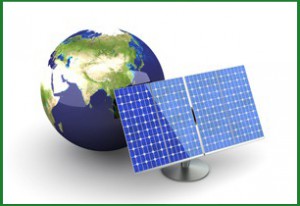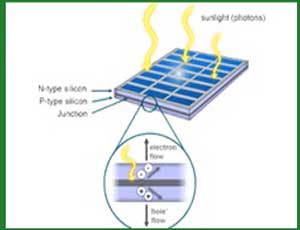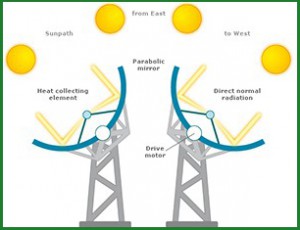WHY SOLAR?
While a majority of the world’s current electricity supply is generated from fossil fuels such as coal, oil and natural gas, these traditional energy sources face a number of challenges including rising prices, security concerns over dependence on imports from a limited number of countries which have significant fossil fuel supplies, and growing environmental concerns over the climate change risks associated with power generation using fossil fuels. As a result, renewable energy sources such as solar, biomass, geothermal, hydroelectric and wind power generation have emerged as potential alternatives which address some of these concerns. Due to the recent advances in solar technologies and manufacturing processes solar power has emerged as one of the most rapidly growing renewable sources of electricity. Solar power generation has several advantages over other forms of electricity generation:

Reduced Dependence on Fossil Fuels – Solar energy production does not require fossil fuels and is therefore less dependent on this limited and expensive natural resource. Although there is variability in the amount and timing of sunlight over the day, season and year, a properly sized and configured system can be designed to be highly reliable while providing long-term, fixed price electricity supply.
Environmental Advantages – Solar power production generates electricity with a limited impact on the environment as compared to other forms of electricity production.
Matching Peak Time Output with Peak Time Demand – Solar energy can effectively supplement electricity supply from an electricity transmission grid, such as when electricity demand peaks in the summer.
Modularity and Scalability – As the size and generating capacity of a solar system are a function of the number of solar modules installed, applications of solar technology are readily scalable and versatile.
HOW IT WORKS

A solar panel turns the Sun’s light into electricity! We see electricity at work every day. For instance, when you turn on a lamp, electrons move through the cord and light up the bulb. That flow of electrons is called electricity. One solar panel is made up of many small solar cells. Each of these cells uses light to make electrons move. The cell is made up of two different layers that are stuck together. The first layer is loaded with electrons, so the electrons are ready to jump from this layer to the second layer. That second layer has had some electrons taken away, so it is ready to take in more electrons. When the light hits an electron in the first layer, the electron jumps to the second layer. That electron makes another electron move, which makes another electron move, and so on. It was the sunlight that started the flow of electrons, or electricity.
SOLAR TRACKER
A solar tracker is a device that orients a payload toward the sun. Payloads can be photovoltaic panels, reflectors, lenses or other optical devices.
In flat-panel photovoltaic (PV) applications, trackers are used to minimize the angle of incidence between the incoming sunlight and a photovoltaic panel. This increases the amount of energy produced from a fixed amount of installed power generating capacity. In standard photovoltaic applications, it was predicted in 2008-2009 that trackers could be used in at least 85% of commercial installations greater than 1MW from 2009 to 2012. However, as of April 2014, there is not any data support these predictions.
In concentrated photovoltaic (CPV) and concentrated solar thermal (CSP) applications, trackers are used to enable the optical components in the CPV and CSP systems. The optics in concentrated solar applications accept the direct component of sunlight light and therefore must be oriented appropriately to collect energy. Tracking systems are found in all concentrator applications because such systems do not produce energy unless pointed at the sun.

Connect With Us To Go Solar
© Copyright 2025 All Rights Reserved
